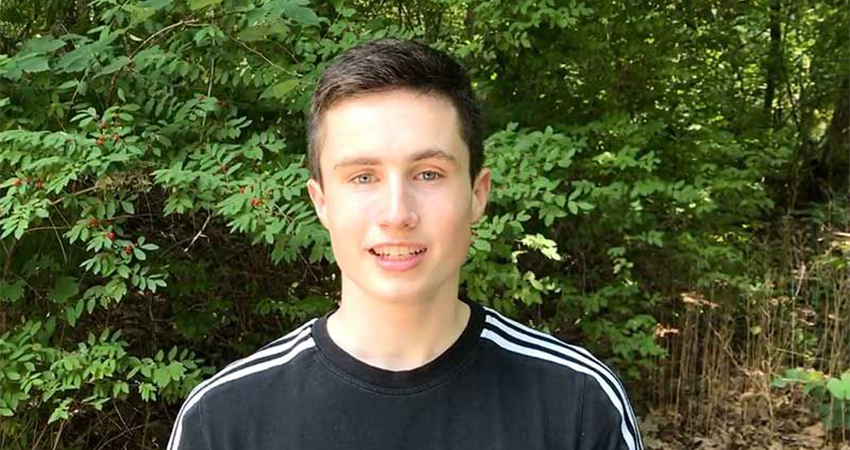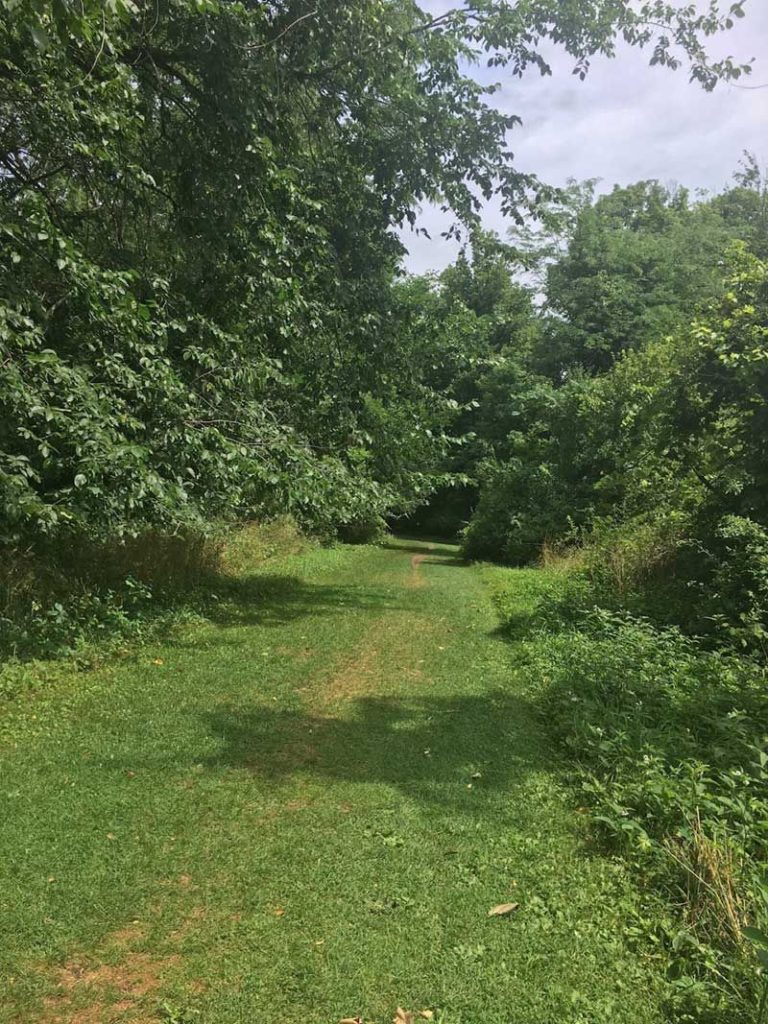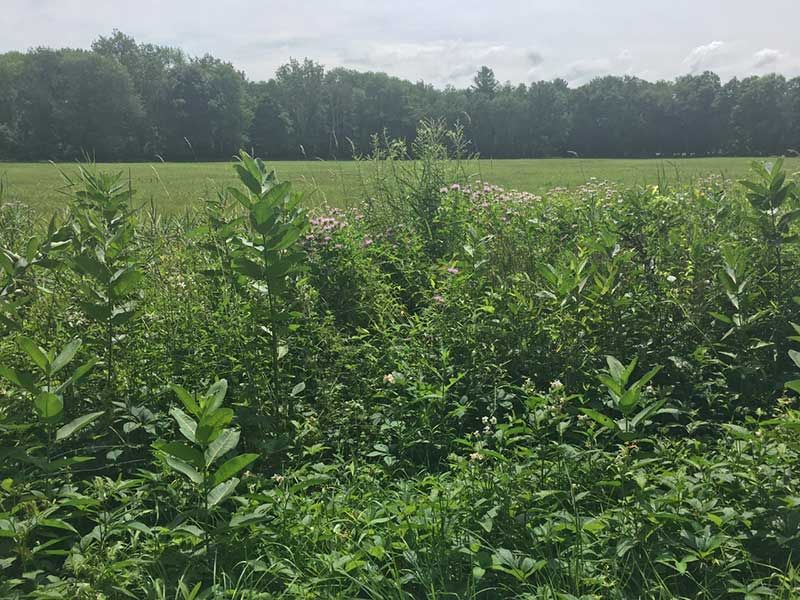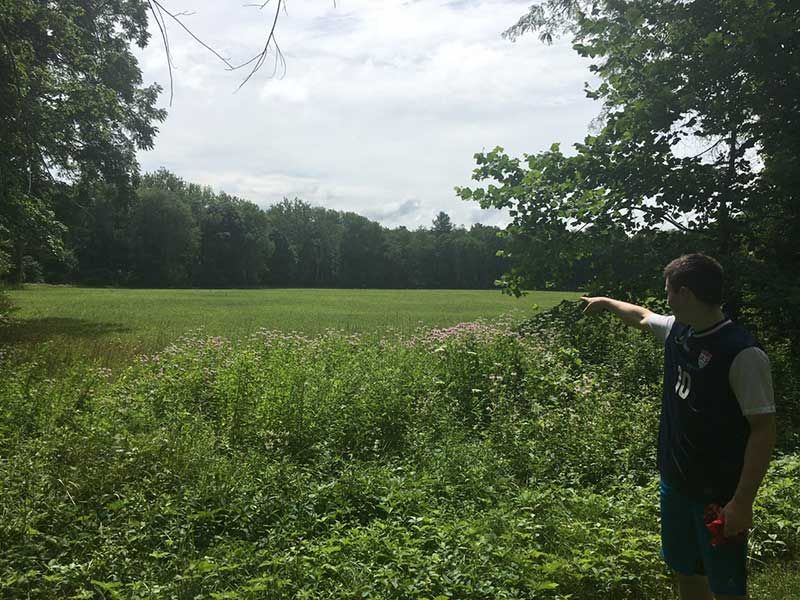Today’s venue is a bit of an unorthodox one. Normally, I venture to nature preserves and land conservation sites in search of the best birding New England and New York have to offer. This visit, however, was on a common footpath that runs parallel to Salisbury’s Main Street between Salisbury and Lakeville known as the Railroad Ramble on the site of the Central New England Railroad route. It is a popular spot for walkers and runners but it is also a fun locale for a quick bird walk.
My mom and I started the walk and quickly discovered that trail was alive with bird life. The first bird ID confirmation was a Northern Cardinal, an extremely common bird but still gorgeous and a sight to behold. As we moved farther along I began to notice a scary sight whose impact is growing by the day.
Over the past couple weeks, northwest Connecticut has had only a few inches of rain, creating increasingly dangerous drought conditions. Instead of the rushing stream that normally crosses under the path there was a meager trickle of water about three feet wide. It was a sad sight to see as it will take more than a couple rain falls to fill the void left by the drought.
We continued along the trail and found ourselves sandwiched by a tree on one side and bushes on the other. This turned out to be quite a fruitful spot… literally. We were able to see American Robins, Gray Catbirds, Red-bellied Woodpeckers, and a House Wren. Farther down I heard the high-pitched song of a Black-and-White Warbler. While I was looking for the warbler my mom stumbled upon wild grapes in the tree above. We kept seeing them throughout the hike.
I record all the birds I see on a walk using a special birding shorthand or code. If the bird has a:
- one-word name such as Bobolink you use the first 4 letters. So, Bobolink is BOBO.
- two-word name then you use the first two letters of each name. For example, a Mourning Dove is a MODO.
- three-word name then you use the first letter of the first word, first letter of the second word, and the first two letters of the last word. That makes the code for a Bay-breasted Warbler is a BBWA.
- four-word name draws the first letter from each, a Black-and-White Warbler is a BAWW.
This system offers an easy way to save time and to save space in my recording notebook. It is also used by birders so I can tally and enter total numbers onto a citizen science website like eBird.
Citizen Science allows anyone to contribute to scientific knowledge and research. Birding is an extremely easy and important way to contribute. Birders on walks often record the data and send it to an organization which can track population trends if the process is repeated over numerous years. You can also upload the list from bird walks to eBird which can help understand migration timing and population. It is a rewarding part of birding.
Next, we moved on toward the marsh land, normally filled with water and life. This time it was different. It had shrunk significantly and become notably more shallow. With climate change these droughts could become more common and more intense. Please try to join the fight against climate change—bird habitats need our protection as Sharon Audubon Director Ellen Fielding, Ph.D. explained in her recent Zoom talk which you can read about in this Noble blog post.
We still were able to see a few more species though. First, I observed a female wood duck swimming along. Then Eastern Kingbirds and Red-winged Blackbirds made themselves known to us by flying by before returning to their nests and perches. A Black-capped Chickadee called the entire time we were there, and a brilliant yellow American Goldfinch flitted across to the other side.
On the drive home I noticed something fly and perch on the telephone wire. I told my mom to slow down and I was able to make out what it was. It was a female Cooper’s Hawk staring down at us. It was by far the highlight of the trip.
I will see you on the next blog. Happy Birding!





